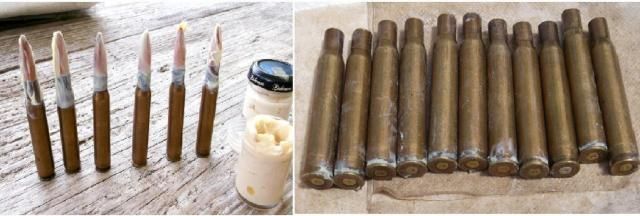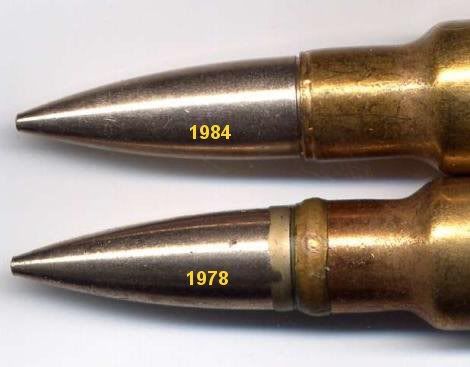Pond James Pond
New member
I recently wrote a thread relating to opening up and homogenising some milsurp cartridges with a view to making them more consistent and hopefully more accurate through my CZ.
I have actually come away with a selection of military grade ammo. Some true milsurp, some mil-grade. Some I just have enough to shoot off a group or too to see how they perform in standard trim, but two I have enough to do some accuracy tests, including pulling them down for charge, neck tension and OAL consistency.
All the true milsurp (manky-looking brass, crimped primers, probably berdan, card-board boxes with functional print) attracts a magnet, so under the copper surface there appears to be a steel jacket. It seems to be a jacket all the way around the core, not just the tip as I moved the small magnet over the bullet and neck, attraction did not waver!!
So my question, before I start pulling stuff apart, is:
Will .30 cal bi-metal, copper/steel cased bullets do more harm to my barrel than regular FMJ at standard velocities for 168-170gr bullets? (guesstimate being around 2600-2750fps)
If my experiment is fruitful, these could become my regular range ammo, giving me trigger time without the cost. I would still handload my best cartidges, but could greatly reduce my costs overall and/or increase my shooting. However, that would be a false economy if I found that my barrel-life dropped by 30%!
I have actually come away with a selection of military grade ammo. Some true milsurp, some mil-grade. Some I just have enough to shoot off a group or too to see how they perform in standard trim, but two I have enough to do some accuracy tests, including pulling them down for charge, neck tension and OAL consistency.
All the true milsurp (manky-looking brass, crimped primers, probably berdan, card-board boxes with functional print) attracts a magnet, so under the copper surface there appears to be a steel jacket. It seems to be a jacket all the way around the core, not just the tip as I moved the small magnet over the bullet and neck, attraction did not waver!!
So my question, before I start pulling stuff apart, is:
Will .30 cal bi-metal, copper/steel cased bullets do more harm to my barrel than regular FMJ at standard velocities for 168-170gr bullets? (guesstimate being around 2600-2750fps)
If my experiment is fruitful, these could become my regular range ammo, giving me trigger time without the cost. I would still handload my best cartidges, but could greatly reduce my costs overall and/or increase my shooting. However, that would be a false economy if I found that my barrel-life dropped by 30%!
Last edited:



